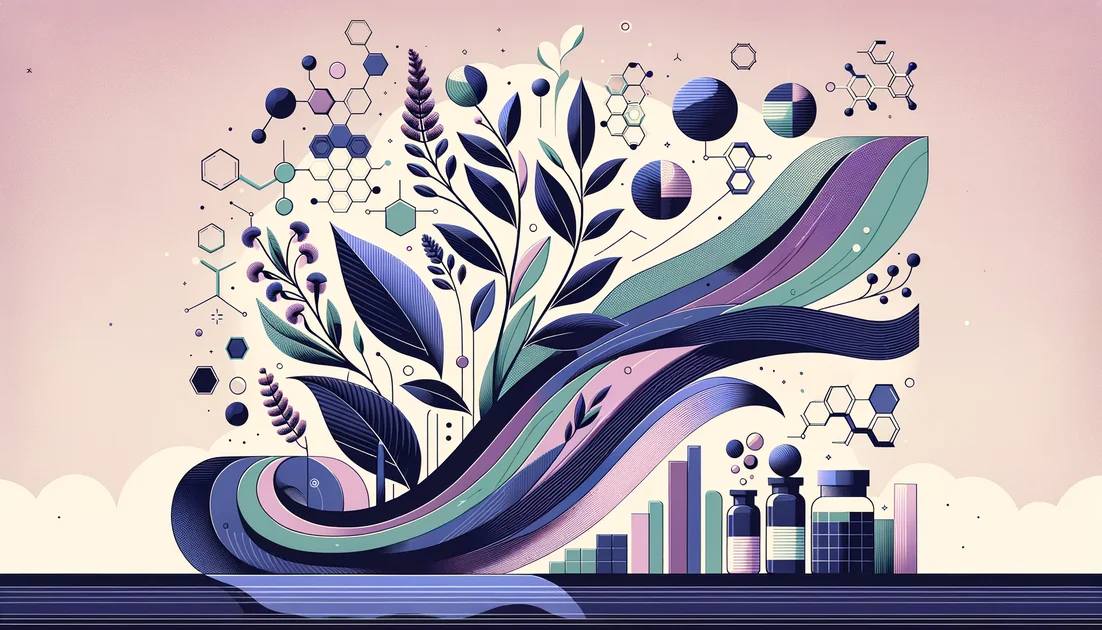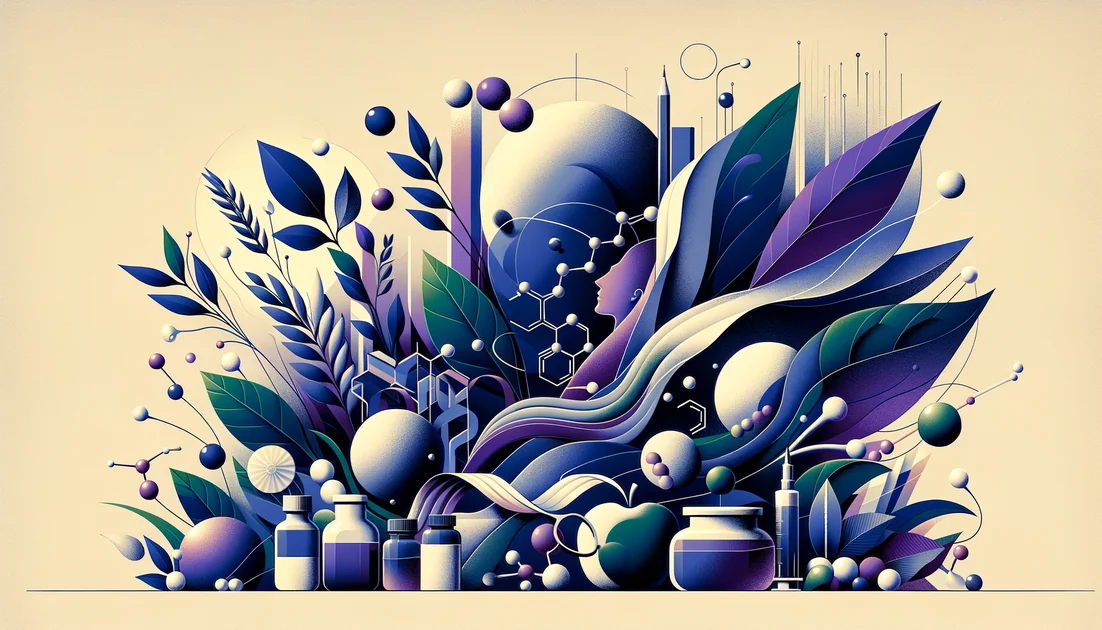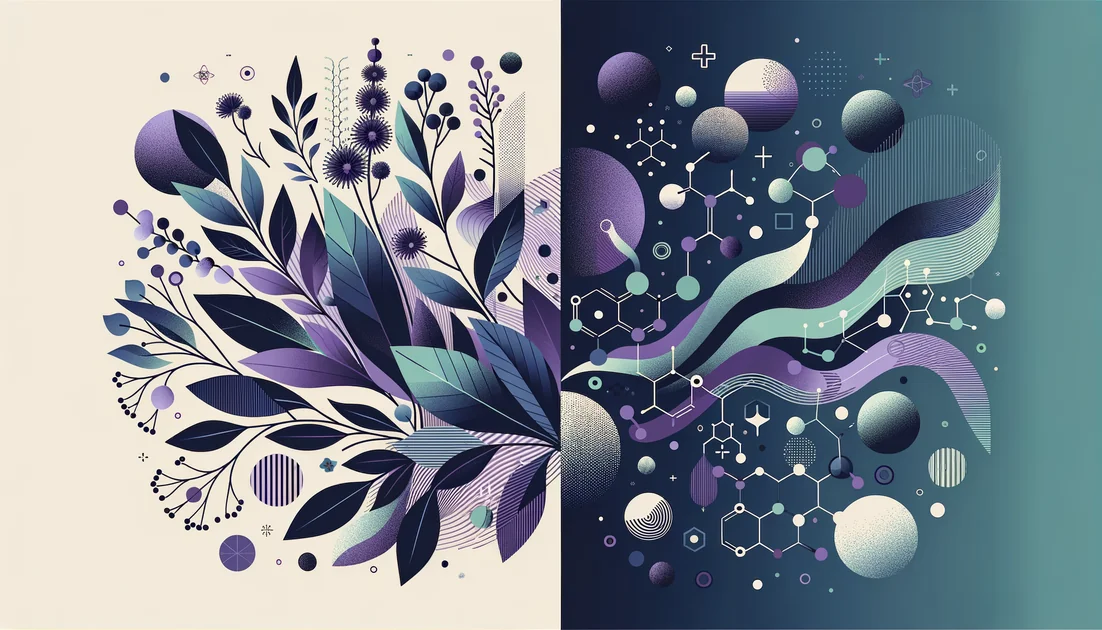
The Vine with Two Voices: How Cat's Claw Went From Priest's Tool to Lab Bench
In the Peruvian uplands, a healer points to a vine that climbs like a cat. To the Asháninka it quiets the disturbance between body and spirit; to a biochemist it tamps down fiery immune signals or even coaxes DNA to mend. How can one plant speak in two scientific voices?
- Evidence
- Emerging
- Immediate Effect
- Yes (mild; activity-related knee pain sometimes improves within 1–2 weeks in U. guianensis trials). → 6–12 weeks for joint outcomes; up to 24 weeks in rheumatoid arthritis adjunct trials.
A sacred vine enters the clinic
Cat's claw—uña de gato—has long been reserved by Asháninka healers for difficult cases, a priestly medicine used to restore harmony when something fundamental has slipped out of balance. One classic ethnopharmacology account describes it as a tool the highest-order priests use "to influence this regulation" between body and spirit.[2] That reverence set the stage for a modern hunt: could the vine's chemistry explain its reputation? By the 1990s, Austrian researcher Klaus Keplinger and colleagues mapped a curious split in the plant's family of alkaloids. Some versions of the vine are rich in pentacyclic oxindole alkaloids (POAs), while others lean toward tetracyclic oxindole alkaloids (TOAs). Here's the twist: in early lab work, POAs appeared to rally certain immune signals, and TOAs could blunt those same effects—two chemotypes tugging in opposite directions.[2]
Two cats in one vine
Think of POA-rich and TOA-rich cat's claw as two siblings with different temperaments. Field studies later showed that the mix of these alkaloids changes with plant part and even season: bark and root generally skew POA-dominant year-round, while leaf ratios hover closer to even—and POA levels rise from rainy to dry season.[10] For consumers, that means bottles labeled simply "cat's claw" may not be telling you which sibling you're getting. Researchers also discovered a second, quieter voice in the vine: water extracts largely free of alkaloids that still did striking things in cells and people. In human volunteers, an alkaloid-poor hot-water extract (often sold as C-Med-100/AC-11) nudged white blood cells toward better DNA repair after standardized oxidative stress—more like a cellular mechanic than an immune cheerleader.[6] In human skin organ cultures, the same extract helped cells fix UV-induced DNA lesions, decreasing sun-damage markers.[7] Different chemistry, different story.
What happened when people with aching joints tried it?
Cat's claw stepped into randomized trials, small but instructive. In rheumatoid arthritis, a 52-week study using a POA-standardized Uncaria tomentosa extract (60 mg/day) found that after 24 weeks, participants reported a larger drop in the number of painful joints than placebo; when the placebo group crossed over, they also improved.[3] These were adjuncts to standard drugs, and benefits were modest—not a cure, but a measurable easing. Osteoarthritis trials, focused more on activity pain than autoimmunity, suggested a quicker signal. In a four-week, placebo-controlled study of Uncaria guianensis, pain with activity fell within the first week, though night/rest pain didn't budge in that short window.[4] A later study compared a maca–cat's-claw blend to glucosamine and reported improvements, but without a placebo group it's suggestive rather than definitive.[8]
Inside the cell: cooling the sparks
If inflammation is the body's fire alarm, tumor necrosis factor-alpha (TNF-α) is one of its loudest sirens. A lab study using decoctions of cat's claw described the plant as a "remarkably potent inhibitor of TNF-α production," at concentrations far lower than those needed for basic antioxidant effects.[5] Translation: beyond mopping up sparks (free radicals), the vine seems to quiet the alarm system itself. Alkaloid-poor water extracts take a different route. Rather than revving or damping the immune siren directly, they appear to help the city's repair crews—DNA-fixing enzymes—arrive faster and clear debris after stress. That's the story in small human studies and skin organ cultures, and it aligns with reports that constituents like quinic acid and related esters can influence the cell's stress-response switches that govern repair.[6][7][9]
A paradox worth respecting
This dual personality—immune-signaling effects that can be pulled in opposite directions depending on chemotype, and DNA-repair effects that show up in low-alkaloid water extracts—helps explain why cat's claw is both promising and hard to pin down. It also underscores why standardization matters. Not all "cat's claw" products are aiming at the same target. Safety-wise, mainstream guidance is cautious. The U.S. National Center for Complementary and Integrative Health sums up the evidence this way: "There's no conclusive scientific evidence based on studies in people that supports using cat's claw for any health purpose."[1] They also flag possible interactions with blood thinners, blood-pressure medicines, CYP3A4-metabolized drugs, and immunosuppressants—sensible warnings for a plant that can nudge immunity and clotting.[11]
Choosing your path through the thicket
If your goal is joint comfort from overuse or osteoarthritis, trials used Uncaria guianensis for 4–8 weeks and saw the earliest improvements in activity-related pain within 1–2 weeks.[4][8] If your interest is autoimmune-flavored joint pain, the rheumatoid arthritis study with a POA-standardized Uncaria tomentosa extract took months to show signal, and it was used alongside conventional meds.[3] Curious about "DNA repair" claims? Those come from small studies of specific hot-water extracts that deliberately minimize alkaloids. They're intriguing for skin and recovery from oxidative stress, but they don't replace sunscreen or standard care; think of them as a nudge to the maintenance crew, not a new fire department.[6][7] As for oncology, research remains mostly preclinical or early and inconsistent. A recent systematic review of cat's claw fractions against cancer cell lines found variable effects depending on extraction and composition, and emphasized the need for rigorous standardization before clinical claims are justified.[9]
The road ahead
The most helpful future work may be less about proving a single blockbuster benefit and more about matching the right "voice" of cat's claw to the right job: POA-standardized extracts for immune-shaped joint conditions; U. guianensis for activity pain; alkaloid-poor water extracts for cellular stress recovery. Chemotype mapping by season and plant part, already underway, can folklore into predictable sourcing and dosing.[10] Until then, cat's claw remains an Amazonian vine with two voices—one that hushes the alarm, another that sends in the repair crew. Respect both, and you'll read the label—and the science—with clearer eyes.
Key takeaways
- •Cat's claw has POA- and TOA-dominant chemotypes, with early data suggesting they can push immune signaling differently and TOAs may blunt POA-linked effects.
- •Clinical signals: a POA-standardized U. tomentosa extract (60 mg/day) improved painful joints in RA over 24 weeks; U. guianensis eased activity-related OA pain within a week of a 4-week trial.
- •DNA-repair studies used alkaloid-poor hot-water extracts at 250–350 mg/day for about 6–8 weeks, distinct from the joint-focused preparations.
- •Timing expectations: OA activity pain changes may appear in 1–2 weeks; autoimmune-type symptoms can require months; DNA-repair protocols span 6–8 weeks.
- •Who might benefit: those seeking adjunct support for OA/RA discomfort or oxidative-stress recovery—always as complements to standard care, not replacements.
- •Caution: because it can affect immune activity and clotting, consult a clinician if on anticoagulants/antiplatelets, antihypertensives, CYP3A4-metabolized drugs, or immunosuppressants; pause before surgery.
You might also like
Explore more of our evidence-led investigations, comparisons, and guides across every article style.

Nootropics Depot
A testing-first nootropics brand with a federal black mark


Best for ADHD (Adults)
Micronutrients (broad formula): 2–8 weeks, best evidence in adults [2]

Lactobacillus acidophilus
In 1900, a pediatrician peered into an infant's diaper and changed nutrition history. Ernst Moro's "acid-loving" bacterium—now called Lactobacillus acidophilus—would jump from lab benches to grocery shelves, fuel a fad for "acidophilus milk," and later reemerge as a precision tool in clinical trials and even vaccine research. The twist? Its benefits were never one-size-fits-all; they depended on the exact strain—and sometimes on whether the cell walls were gently broken like a soft-boiled egg.


Tocotrienols
The stealthier cousins of vitamin E—built with springy tails that move differently in cell membranes and behave differently in your body.


